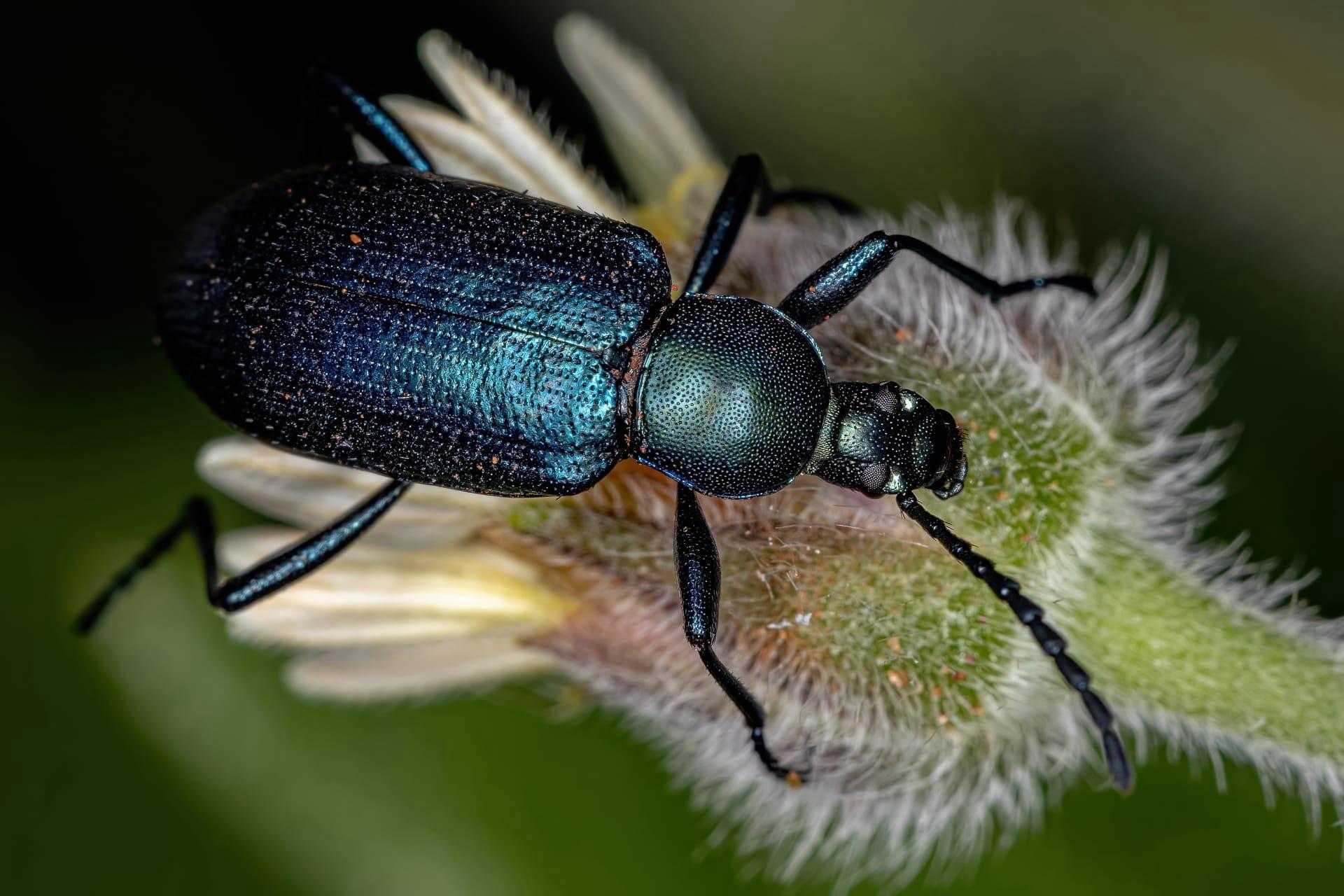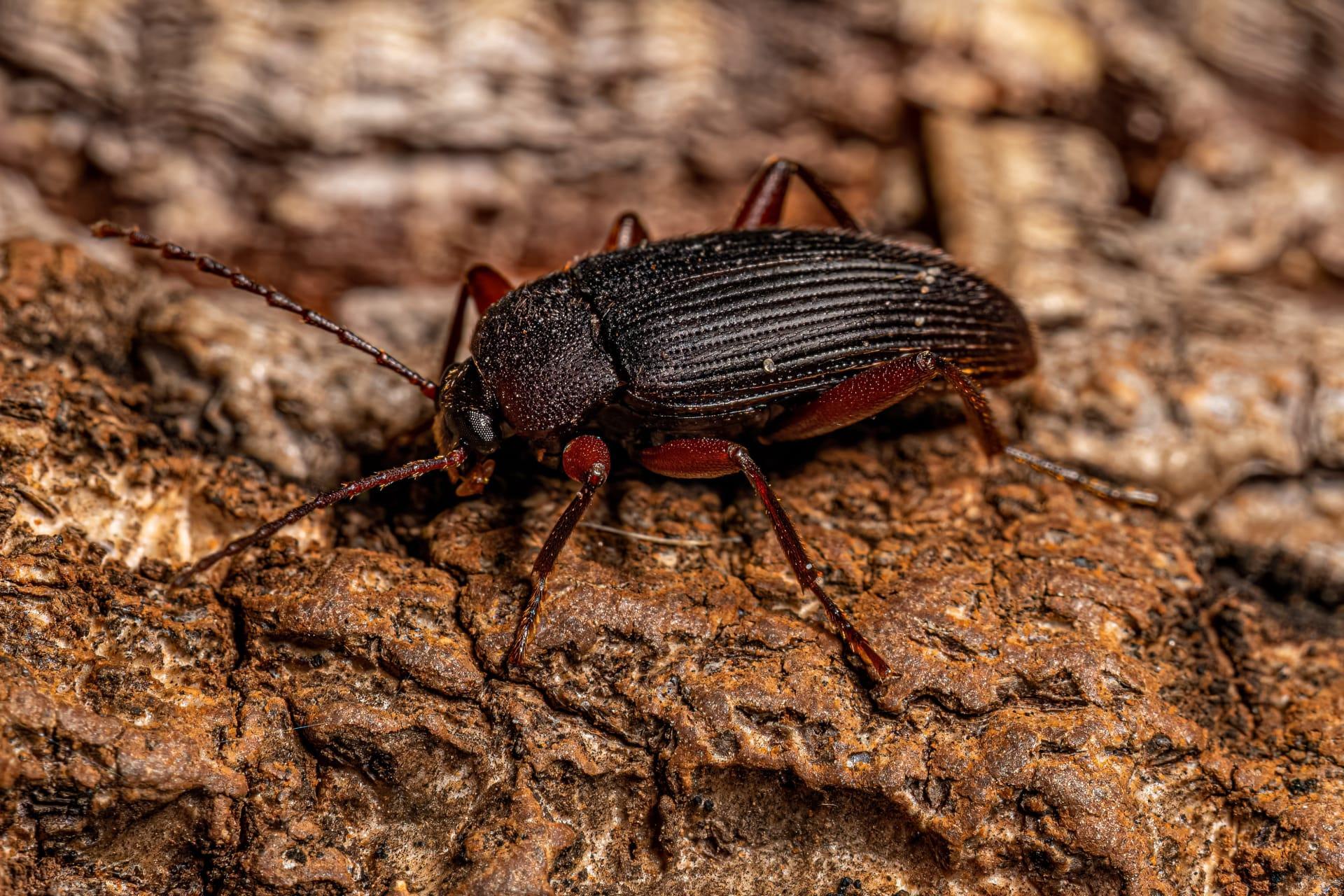Darkling Beetle
- Home /
- Mini Encyclopedia /
- Animal /
- Darkling Beetle
1
The Darkling Beetle, scientifically known as Tenebrionidae, belongs to the order Coleoptera, commonly known as beetles. This family is vast, comprising over 20,000 species. They're recognized by their distinct straight-lined bodies, ranging from 1 to 80 millimeters in length, and their hardened front wings, called elytra, which protect their flying wings underneath.
Darkling Beetles are found globally, thriving in diverse habitats. They're particularly abundant in arid environments like deserts. These beetles have adapted to survive in various climates, from hot, sandy landscapes to colder, temperate regions. Their global distribution makes them one of the most widespread beetle families.

2
Question: Do Darkling Beetles damage crops or properties?
Answer: Contrary to popular belief, Darkling Beetles are not typically harmful to crops or properties. Most species feed on decomposing plant material, playing a crucial role in nutrient recycling. They are often mistaken for pests due to their presence in large numbers, but they generally do not cause significant damage to living vegetation or structures.

3
Darkling Beetles have developed remarkable survival strategies. One notable adaptation is their ability to conserve water, crucial in arid habitats. They achieve this by minimizing water loss through their exoskeleton and efficient waste excretion. Some species can also produce a chemical substance as a defense mechanism against predators.
Another strategy is their varied diet. These beetles are primarily detritivores, consuming dead plant matter. However, they can adapt to eat a range of organic materials, from fungi to feces, depending on environmental availability. This dietary flexibility aids their survival in diverse environments.

4
In the ecosystem, Darkling Beetles play a significant role as decomposers. By feeding on dead plant matter, they contribute to the breakdown and recycling of nutrients back into the soil. This process is vital for plant growth and maintaining soil health.
They also serve as a food source for various animals, including birds, reptiles, and mammals. Their presence in the food chain highlights their importance in maintaining ecological balance. Predators that feed on these beetles help regulate their populations, ensuring a balanced ecosystem.

5
Film: "Beetles: The Secret World" (United Kingdom, 2016) is a documentary exploring the diverse world of beetles, including Darkling Beetles. It delves into their behaviors, survival strategies, and roles in various ecosystems, providing a comprehensive view of these often-overlooked insects.
Book: "The Beetle Book" (United States, 2012) by Steve Jenkins offers an in-depth look into the beetle world, including Darkling Beetles. This book combines detailed illustrations with fascinating facts, making it an engaging read for both adults and children.
Book: "Beetles of Eastern North America" (United States, 2014) by Arthur V. Evans. This comprehensive guide covers over 1,400 beetle species, including Darkling Beetles. It provides detailed descriptions, habitat information, and photographic illustrations, making it a valuable resource for entomologists and nature enthusiasts.